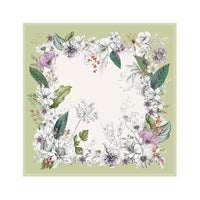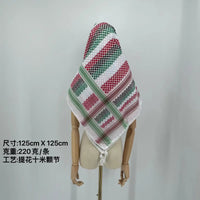Is a Keffiyeh Religious?
The keffiyeh, a traditional headscarf commonly associated with Middle Eastern and North African cultures, is often seen draped around the necks or heads of individuals worldwide. But is a keffiyeh religious? This article delves into the origins, cultural significance, and the multifaceted symbolism of the keffiyeh, clarifying its role beyond religious connotations.
The Origins of the Keffiyeh
Historical Background
The keffiyeh, also known as a shemagh or ghutra, has ancient roots tracing back to Mesopotamia, now modern-day Iraq. The term "keffiyeh" itself is derived from Kufa, a city in Iraq. Historically, it was worn by Sumerian and Babylonian priests around 5,000 years ago. This headscarf has been a staple for Bedouin tribesmen, shielding them from the harsh desert sun and sand.
Evolution Over Time
Initially, the keffiyeh was a practical garment for rural workers and peasants, known as fellahin, who used it to protect themselves from the elements. Over time, it transcended its utilitarian origins to become a symbol of cultural identity and resistance, especially among Palestinians.
Cultural Significance of the Keffiyeh
Palestinian Symbolism
The keffiyeh holds profound significance in Palestinian culture. During the 1936-1939 Arab revolt against British colonial rule, Palestinian nationalists adopted the keffiyeh to conceal their identities and show solidarity. This act of unity transformed the keffiyeh into a symbol of resistance and national pride.
Yasser Arafat, the late Palestinian leader, further popularized the keffiyeh globally. His distinctive way of wearing the keffiyeh, draped over his right shoulder, became synonymous with the Palestinian struggle for independence.

Patterns and Meanings
The keffiyeh's patterns are rich with symbolism. The black stitching on the white cotton fabric is often interpreted as representing fishing nets, honeycombs, or the marks of dirt and sweat wiped off a worker's brow. These designs are not merely decorative; they embody the resilience and cultural heritage of the Palestinian people.
Is the Keffiyeh Religious?
Non-Religious Origins
Contrary to some beliefs, the keffiyeh does not have a religious origin. It is a cultural artifact worn by individuals regardless of their religious beliefs. Arab Christians, Muslims, Druze, and secular individuals all wear the keffiyeh, making it a unifying symbol across different faiths.
Modern Usage and Misconceptions
In modern times, the keffiyeh has been adopted by various groups as a symbol of solidarity and resistance. It has also become a fashion statement, leading to accusations of cultural appropriation. Despite its widespread use, the keffiyeh's cultural and historical significance remains paramount, especially to Palestinians.
Variations of the Keffiyeh
Regional Differences
The keffiyeh varies in design and color across different regions. The black-and-white checkered keffiyeh is most commonly associated with Palestine. In contrast, the red-and-white shemagh is popular in Jordan and Saudi Arabia, while the plain white ghutra is favored in the Gulf states.
Fashion and Global Influence
The keffiyeh's influence has extended beyond the Middle East. In the 1960s and 70s, it became a symbol of the anti-war movement and was worn by political protesters worldwide. Today, it is a fashionable accessory, often seen in urban outfitters and high-end designer collections. However, this commercialization has sparked debates about cultural appropriation and the dilution of its symbolic value.
The Keffiyeh Today
Symbol of Resistance
Despite its commercialization, the keffiyeh remains a potent symbol of Palestinian identity and resistance. It is worn at protests and rallies to show solidarity with the Palestinian cause. The keffiyeh's patterns and designs continue to evoke a deep sense of cultural pride and historical continuity.

Cultural Appropriation Concerns
The mass production of keffiyehs, particularly those made in China, has impacted traditional Palestinian manufacturers. The Hirbawi factory in Hebron, the last Palestinian keffiyeh manufacturer, struggles to compete with cheaper, mass-produced versions. This economic challenge underscores the broader issue of cultural appropriation and the need to preserve the keffiyeh's authentic cultural heritage.
Conclusion
In conclusion, the keffiyeh is not a religious garment but a powerful cultural and political symbol. Its rich history, from ancient Mesopotamia to its role in modern resistance movements, highlights its significance beyond mere fashion. For Palestinians, the keffiyeh represents resilience, identity, and solidarity. As we wear or admire this iconic headscarf, it is essential to recognize and respect its profound cultural and historical meanings.





